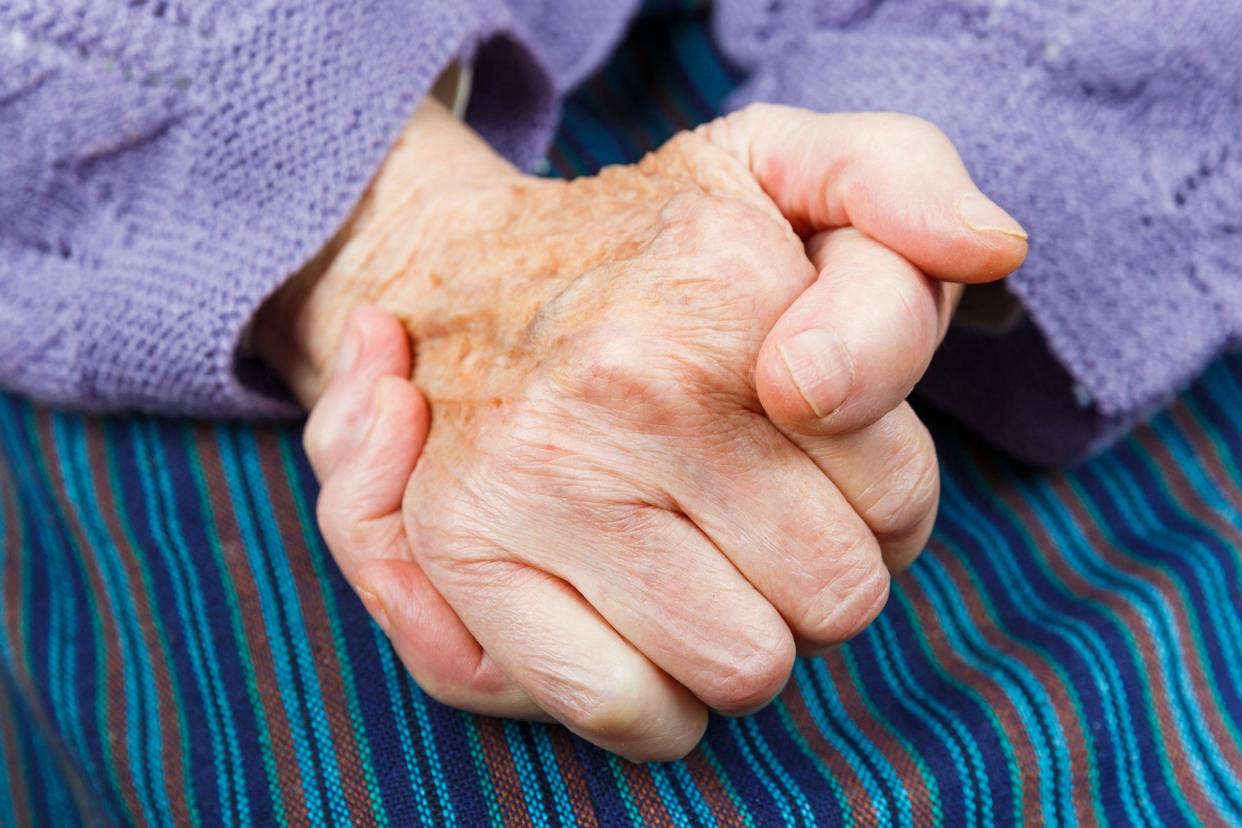Emergency medicine: Cancer relapse leads patient to consider her end-of-life wishes

- Oops!Something went wrong.Please try again later.
Monica came to the emergency department by ambulance for shortness of breath. The paramedics knew her well because she had been quite sick for many years, and they had treated and transported her to the hospital multiple times. Her nurse asked me to come see her right away because she looked distressed.
I immediately saw how anxious she was: she had a tight grip on the handrails of her bed and her eyes were wide open. The paramedics had placed a mask with oxygen on her face. I quickly glanced at the monitor to see that Monica’s blood pressure, heart rate and oxygen level were OK. One of the paramedics asked if he could talk to me in the hall. I introduced myself to Monica, asked the nurse to get her IV started and told her I’d be right back.
The paramedic told me that Monica, who was in her early 80’s, had a long history of cancer that had been in remission, but it had recently recurred. He said she had always wanted to have everything done for her, but he mentioned that her husband told them that she was interested in hospice care.
I looked through Monica’s records on the computer and saw that she had undergone cancer treatment several years prior and had been doing well the past few years. She had recently undergone scans that showed that her cancer had recurred and was not responding to chemotherapy.
I went back in to find Monica much more relaxed. The nurse had been able to turn down the oxygen in the face mask and transition her to oxygen through a small tube in her nose. Her husband had not yet arrived, but she told me that her son was going to be driving him to the emergency department (ED). She had been increasingly short of breath over the past few days. She had previously had fluid around her lungs (caused by her cancer) that had to be drained, and was worried that fluid had reaccumulated.
I ordered a chest X-ray and asked the nurse to let me know when Monica's family arrived. A short time later I got her report, which showed her fluid collections had returned and were worse than they had been. I went back to check on Monica and her son and husband were walking down the hall toward her room. I introduced myself and asked if we could briefly talk before going into the room.
Monica’s son asked how she was doing and said they were just trying to come to terms with her recent news and further decline in health. They told me Monica had decided that she did not want to keep undergoing treatment for her cancer. Until that point Monica had designated herself as “full code”, which means she wished to undergo all medical treatments and wanted to have everything done in the event that her heart stopped or she stopped breathing.

I went into Monica’s room with her family; she looked so relieved to see them as her husband immediately grabbed her hand and kissed her on the forehead. I sat down on the other side of Monica and pulled up her chest X-ray on the computer so she could see the abnormality. She paused for a moment, took a deep breath, and said that she was not interested in doing any other cancer treatments and wanted to know if we could just focus on keeping her comfortable. I held her other hand and reassured her that she would direct what happened and we would honor her wishes.
Her son had tears in his eyes and told Monica that he supported her decision fully. Her husband rubbed her hand and nodded his head in agreement. I consulted with our hospital hospice team, which was able to come to the ED and meet with Monica and her family. She said If her heart were to stop beating or she were to stop breathing, she would not want to undergo CPR, heart defibrillation, or be put on a ventilator. She did not wish to undergo any further treatment.
After our discussion, I signed a Do-Not-Resuscitate (DNR) order for Monica. The order allows an individual to document their choices relating to CPR. In Ohio, there are two types of DNR directives — the difference between the two is when the DNR order becomes active. With DNR Comfort Care (DNRCC), the order is active once the form is signed by an authorized health care provider. This directive indicates that the patient will not receive resuscitative medications, CPR, defibrillation or be put on a ventilator.
A DNR-Comfort Care Arrest (DNRCCA) directive means the patient can choose to receive medical care until the time of cardiac or respiratory arrest, at which point the directive becomes active, resuscitative efforts are stopped, and comfort care measures are instituted. This form can be completed at any time, even when someone is young and without chronic medical problems.
Monica made the decision to not pursue further treatment for her cancer and wanted to focus on being comfortable. She asked me to designate her as DNRCC. She was admitted to a hospice facility, where she was able to spend the last few weeks of her life with her family members at her side before she comfortably passed.
I was grateful that Monica was able to discuss her end-of-life desires with her family, make her decision, and that we were able to honor her wishes of how she wanted to spend the final days of her life.
This article originally appeared on The Columbus Dispatch: Woman reconsiders end-of-life wishes after cancer returns

